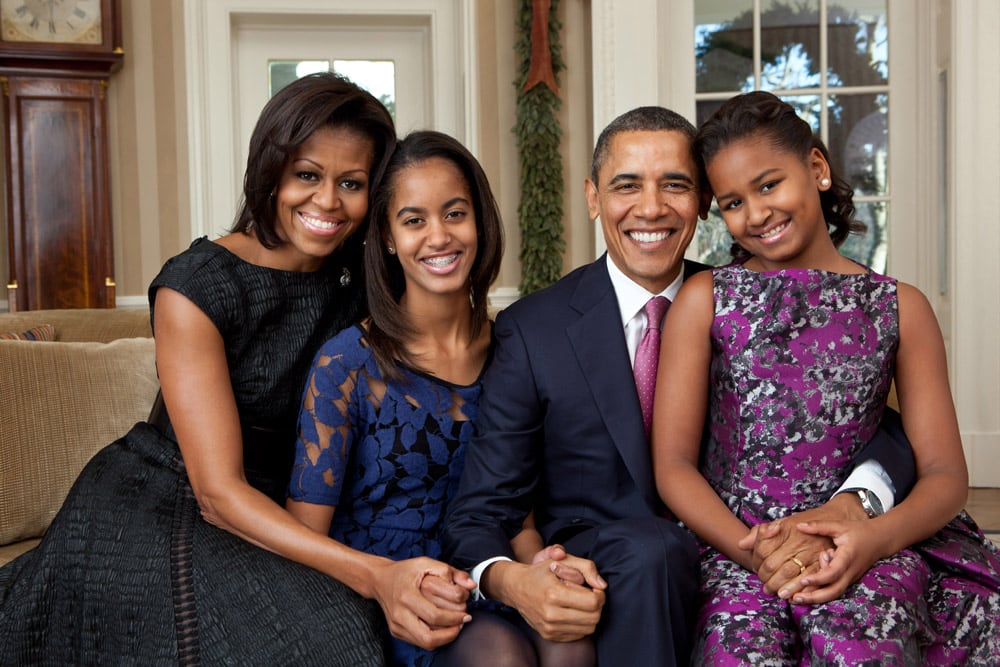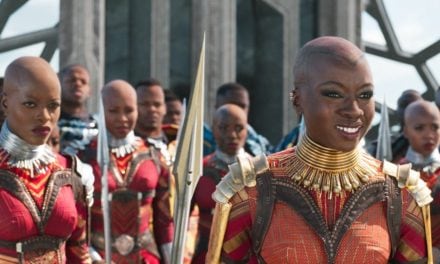Michelle Obama is certainly a different kind of First Lady – in style and substance. The moment she appears before a crowd, people reach out to touch her. She shakes hands, leaning in to share a laugh. She is the first African American to occupy the unelected but strategically and symbolically important position, but her special talents have made her influential across the world.
She is also a fun-loving and a nurturing mom who has taken on a long list of causes to benefit children. She speaks about substantive issues — from aiding military families to making healthy eating choices — in a way that makes others listen, whether her audience is policy makers or anxious teens. To get kids engaged in her “Let’s Move!” campaign against childhood obesity, she dispenses with the lecture, slips on her workout gear and dances right by their side. She’s even willing to get her well-manicured hands dirty — in the White House garden that is – to make a point. Her book, “American Grown: The Story of the White House Kitchen Garden and Gardens Across America,” was written to really drive her message home.
Indeed, the president’s soulmate has a sky-high approval rating and has proven that she is — in many ways — the wind beneath his wings. But that says nothing of the very special and unique impact Michelle has had on millions of black women. Her arrival on the wider public stage in 2008 gave a face and voice to the long-realized dreams of generations of black women.
“I love First Lady Michelle Obama because she is the epitome of the words ‘strong, black woman,’” said Wyllisa Bennett, a celebrity publicist based in Los Angeles. Bennett traveled to Charlotte last year to cover the Democratic National Convention as an ally correspondent for the award-winning web series NoMoreDownLow.tv.
“Leading by example, she is a global role model and ambassador, challenging the negative stereotypes and images of African-American women that populate pop culture.”
Making a Difference One Image at a Time
While she does not often speak of it publicly, the First Lady is aware of the startling impact she has had on much of America when it comes to their image of black women. At the 2008 Democratic National Convention in Denver, after a speech that served as a debut on an international stage, this educated, accomplished wife, mother, lawyer, told me: “Sometimes I do believe that people don’t believe I exist.”
For many Americans, the picture from the White House is a living example of a tradition of strong African-American families and a rebuke to those who would find that picture a fantasy. The very people who would find it tough to believe that Michelle, her beautiful daughters, her loving husband and helpful mother were in fact at the center of America’s political royalty.
Her dedication to her family is legend. One day during her husband’s first presidential run, for example, she had been on a tight schedule, criss-crossing North Carolina and heading to an appearance in Asheville. She was trying to finish her appointments in time to be back in Chicago to put her two daughters to bed. As self-described “mom-in-chief,” she maps much in her life around her daughters, Malia and Sasha. Obama has said she treasures “personal moments” with her family.
Certainly, the election of Barack Obama as the country’s first African-American president was a barrier-shattering step for the United States. But right beside him in life, as well as in the history books, is Michelle Obama. Say he wouldn’t have gotten so far without her, and Barack Obama would probably agree with you.
Those who didn’t know much about the first-term senator from Illinois quickly learned that his life partner was a strong woman, matching him in smarts and education, and complementing his international upbringing with her solid, middle-class roots from a childhood on the South Side of Chicago.
Obama’s place in history is assured, but it is in the hearts and minds of black women that she may well make the greatest impact.
African-American women in particular relate to her as the woman who has defied stereotypical American standards of beauty. As fashion expert Michaela Angela Davis, who has campaigned for more positive images of black women in the media, put it: “Michelle is black from a distance,”
The more crass critics such as Wisconsin Republican Rep. Jim Sensenbrenner made inappropriate and disrespectful comments about her form, the more the First Lady became a style icon who is elegant and gorgeous every step of the way.
“She is a fearless mother who puts her family first,” said Shalonda Gallman, an on-air personality with WGIV radio in Charlotte. “She passionately advocates for many causes, which I love to read about.”

First Lady Michelle Obama with President Barack Obama and their daughters, Malia and Sasha, as they sit for a family portrait in the Oval Office in December 2011. (Official White House Photo by Pete Souza)
Living in a True Partnership With the President
Truth be told, many of the African-American women who became Barack Obama’s most stalwart supporters at first trusted him, in part, because he so obviously valued his wife in a true partnership.
During the 2012 campaign, Obama walked a tightrope, staunchly defending her husband’s record without stepping over that invisible line where black woman are judged too assertive, too sassy – too much. In fighting that stereotype, she had a tougher task than Ann Romney, the wife of Republican presidential nominee Mitt Romney, who operated by a different set of societal rules.
Her job, the First Lady said, as she previewed the speech she would give later that day at the Democratic National Convention, was to remind viewers and voters of the kind of man Barack Obama is, “his values and his convictions and his character.”
Obama strolled onto the stage in Charlotte, N.C., in a pink-and-silver dress by African-American designer Tracy Reese (sleeveless, of course, to show off her much-admired arms) and delivered a prime-time speech that stole the show.
“There’s nothing like having testimony on a Tuesday night,” Donna Brazile, vice chair of the Democratic National Committee, said of Obama’s crowd-pleasing appearance during a meeting of the African American Caucus there the next day. A South Carolina delegate said the First Lady “keeps it real, but does it in an intelligent manner.”
The First Lady said she was tired after her speech the night before. But she looked energized as she listened to her brother, Craig Robinson, describe how proud he was of his sister and how moved he had been hearing her recount how their disabled, hard-working father endured to support his family.
Inspiring Women, Children and All Americans
In August 2013, when numbers from the Centers for Disease Control and Prevention found declining obesity rates in poor children, it was a sign of progress for one of Obama’s signature efforts.
When asked in a recent Parade magazine interview if having an African-American family in the White House has moved the needle, the First Lady answered: “Absolutely. Children born in the last eight years will only know an African-American man being president of the United States. That changes the bar for all of our children, regardless of their race, their sexual orientation, their gender.
“It expands the scope of opportunity in their minds. And that’s where change happens. You know, laws and policies are important. But in the end, it’s how we’re living our lives.”
Kimberly Watson Brooks reached back to a historical example to explain what the First Lady means to her. “I remembered feeling so hopeless when I first learned about the doll test, a sociological experiment where children’s attitudes about race were examined by having them look at a black and white doll and make judgments based upon the dolls appearance,” said Brooks, a Charlotte actress and corporate development associate at NPR station WFAE.
“The black doll was considered bad, ugly and inferior, while the white doll was seen as good, beautiful and superior. Even black children came to the same conclusions. I was dismayed by this study’s findings because I thought there was an entire generation of children growing up thinking they were second-class citizens.”
“When Michelle Obama became the First Lady, I thought this was our chance to begin changing perceptions of what it means to be a black woman,” Brooks continued. “After all, she’s a highly visible woman who could — by the very nature of her presence in the White House — show little black girls, women and the world something different. She’s an educated, professional woman who is a partner in every way, to the most powerful man in the world. She also serves as a symbol of what it means to be a beautiful woman who looks after her family, her health and her community.”
Brooks said Michelle Obama inspires her, makes her proud, “makes me think that one day, the doll test might show how the world has grown to value little black girls and black women as important, valued and integral parts of our society.”
In the example she has set, one that is sure to extend beyond the 2016 election, Michelle Obama has led a life that Americans of every race can admire.
Mary C. Curtis is an award-winning Charlotte, N.C.-based journalist and a contributor to the Washington Post’s “She the People” blog, theGrio and WCCB News Rising Charlotte. Follow her on Twitter at @mcurtisnc3.
Michelle Obama photo above and on home page by Peggy Sirota/Trunk Archives









